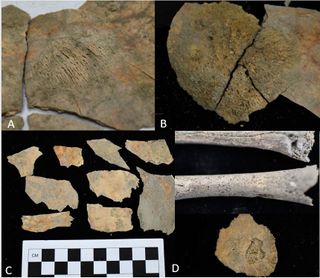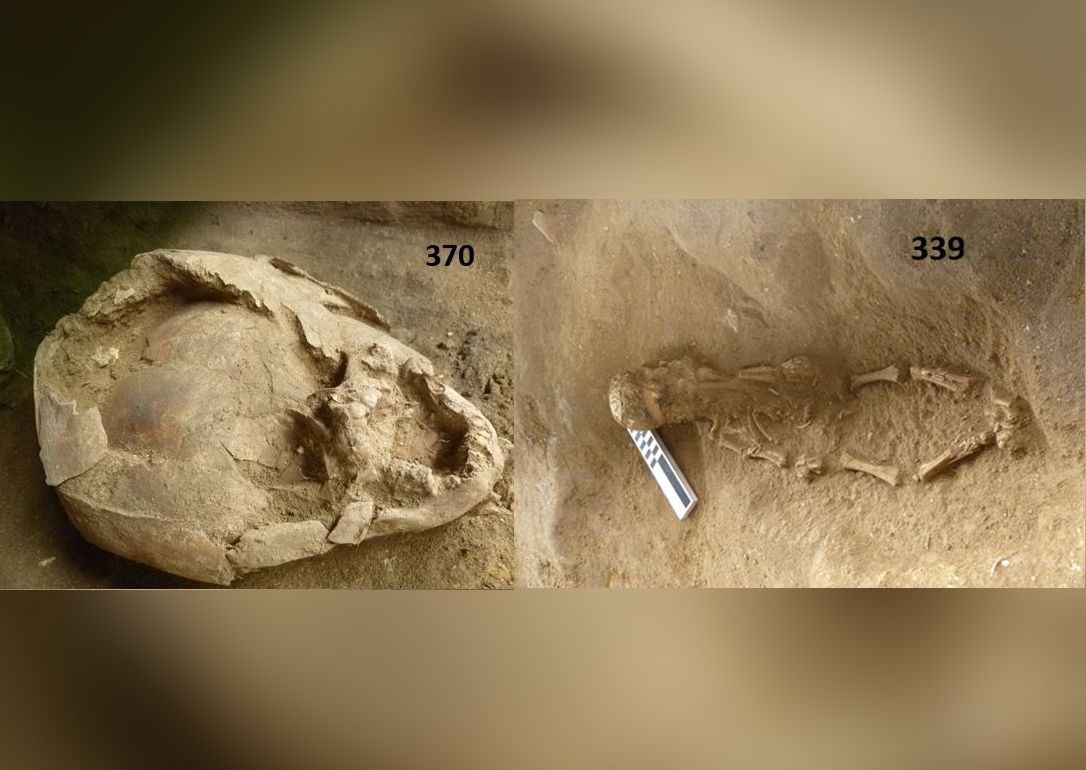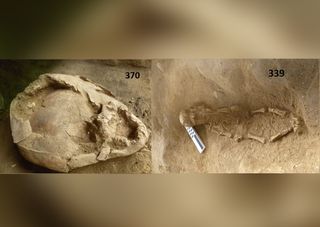Two infants were buried some 2,100 years ago wearing "helmets" made from the skulls of other children, archaeologists have discovered.
The remains of the two infants were found with nine other burials at a site called Salango, on the coast of central Ecuador. The archaeologists who excavated the burials between 2014 and 2016 recently published the details of their findings in the journal Latin American Antiquity.
The team says this is the only known case in which children's skulls were used as helmets for infants being buried. The scientists don't know what killed the infants and children.
Related: Bones with Names: Long-Dead Bodies Archaeologists Have Identified
Putting the "helmets" on
The helmets were placed tightly over the infants' heads, the archaeologists found. It's likely that the older children's skulls still had flesh on them when they were turned into helmets, because without flesh, the helmets likely would not have held together, the archaeologists noted.
One infant's "face looked through and out of the cranial vault" — the space in the skull that holds the brain — the archaeologists wrote.
Related: 25 Grisly Archaeological Discoveries
Interestingly a "hand phalanx," a type of bone, was found wedged between the infant's head and the helmet. They don't know whom the hand phalanx belonged to, said Sara Juengst, lead author of the paper and an anthropology professor at the University of North Carolina, Charlotte. Juengst noted that other tests, such as those using DNA and strontium isotopes (variations of an element with different numbers of neutrons), may help to identify the owner of the bones.

Infant bone helmets
The archaeologists are not certain why helmets made from children's skulls were placed on the infants' heads. It "may represent an attempt to ensure the protection of these 'presocial and wild' souls," the archaeologists wrote. Near the infants, the archaeological team also discovered ancestor figurines, which depict ancestors, made of stone. This finding supports this protection idea, as their presence indicates a "concern with protecting and further empowering the heads," the archaeologists wrote.
Previous work suggests that a volcanic eruption covered the area in ash not long before the infants were buried. This eruption may have affected food production, and the newly discovered bones suggest the infants and children suffered from malnutrition, the researchers said.
It's possible that "the treatment of the two infants was part of a larger, complex ritual response to environmental consequences of the eruption," the archaeologists wrote, noting that "more evidence is needed to confirm this."
- 30 of the World's Most Valuable Treasures That Are Still Missing
- The 25 Most Mysterious Archaeological Finds on Earth
- Bones with Names: Long-Dead Bodies Archaeologists Have Identified
Originally published on Live Science.


